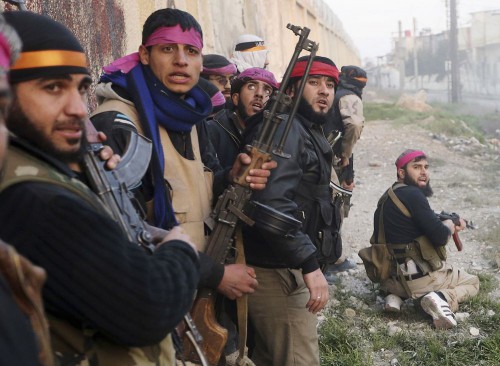Tout observateur du conflit syrien désireux de connaître de plus près la rébellion anti-régime aura quelque peine à s’y retrouver en raison de l’inflation des groupes armés que l’on estime aujourd’hui à plus d’un millier. La guerre fratricide dans laquelle sont plongées les principales milices djihadistes depuis le début de l’année accentue la confusion notamment sur le rôle et l’évolution d’Al Qaïda dans le conflit. Pourtant, au-delà de leurs rivalités économiques et territoriales, une même idéologie et une même stratégie les unissent et les relient à un acteur clé de la guerre de Syrie : le royaume d’Arabie saoudite.
Le wahhabisme syrien avant la guerre
Le courant religieux fondé il y a quelques 250 ans par le prédicateur extrémiste Muhammad Ben Abdel Wahhab dans le Najd en Arabie saoudite, n’est pas un phénomène de mode soudainement apparu en Syrie à la faveur du printemps arabe. Le wahhabisme dispose en effet d’une base sociale solide entretenue depuis plusieurs années par les Syriens qui vivent en Arabie saoudite et dans les autres théocraties de la péninsule arabique. En Syrie, les émigrés du Golfe sont singulièrement appelés « les Saoudiens » car à leur retour au pays, on les confond avec les vrais Saoudiens. La plupart de ces émigrés reviennent en effet imprégnés du puritanisme rituel, vestimentaire, familial et sociétal qui caractérise les royaumes wahhabites (1).
Mais le wahhabisme syrien est aussi le fait de prédicateurs salafistes chassés par le régime de Damas et accueillis par les royaumes du Golfe. Malgré la distance et la répression, ces salafistes exilés sont parvenus à entretenir des réseaux d’influence dans leurs régions et leurs tribus d’origine.
La multiplication des chaînes satellitaires émettant depuis les pays wahhabites a renforcé en Syrie la popularité de certains exilés syriens reconvertis dans le « télé-coranisme ». Le plus emblématique d’entre eux est sans doute Adnane Arour. Exilé en Arabie saoudite, celui que l’on surnomme le cheikh de la discorde (fitna), anime plusieurs émissions sur Wessal TV et Safa TV où il a popularisé les harangues anti-chiites et anti-alaouites notamment celle où il appelle à « passer les alaouites au hachoir et à jeter leur chair aux chiens ». Dans la région de Hama dont il est originaire, Arour a gardé une influence significative au point que son nom était loué dès les premières manifestations anti-régime de 2011.
D’un point de vue historique et territorial, la wahhabisation rampante de la Syrie s’est d’abord imposée dans les populations rurales échappant au sunnisme institutionnel syrien d’orientation hanafite réputé tolérant. Suite au virage libéral emprunté par le parti Baas en 2005, le wahhabisme a connu un nouvel essor dans les banlieues misérables des métropoles syriennes ou les villes de seconde zone comme Douma ou Darayya ravivant le spectre de la discorde inter-communautaire.
De nombreux Syriens qui se sont enrichis en Arabie saoudite lancèrent des campagnes caritatives dans leur pays d’origine, accroissant ainsi leur influence parmi les Syriens défavorisés. Chaque carence de l’Etat était aussitôt comblée par des réseaux de bienfaisance liés à d’ambitieux cheikhs exilés. L’un des plus connus s’appelle Mohammad Sourour Zayn Al Abidin. Il est le chef de file d’un courant prosélyte à mi-chemin entre le mouvement des Frères musulmans syriens et le wahhabisme (2).
Le moment venu, les Syriens du Golfe sont devenus les principaux sponsors privés du djihad en Syrie, aussitôt assistés dans leur « mission sacrée » par des riches donateurs saoudiens mais aussi koweïtiens, bahreïniens ou encore jordaniens, pour la plupart, d’obédience wahhabite (3).
Malgré le calme tout relatif qui faisait la renommée du régime sécuritaire de Damas avant les troubles et la guerre que nous connaissons depuis trois ans, le pays a connu plusieurs cas d’échauffourées et de provocations à caractère confessionnel. (4) Une alaouite originaire de la ville majoritairement sunnite de Tall Kalakh dans le gouvernorat de Homs m’a parlé de tentatives de pogromes anti-alaouites plus d’un an avant les premières manifestations démocratiques de mars 2011. D’autres Syriens m’ont confirmé l’installation durant la décennie précédente, d’un climat délétère sur fond de rancœurs communautaires dans les quartiers pauvres de Damas et dans certains villages d’Idlib.
Les autorités syriennes ont préféré étouffer ce type d’incidents pour éviter la contagion.
En mars 2011, les slogans hostiles aux chiites, au Hezbollah et à l’Iran scandés aux portes de la mosquée Abou Baqr As Saddiq à Jableh sur la côte syrienne ont rapidement cédé la place aux appels à la guerre contre les minorités. Alors que les Syriens manifestaient contre l’injustice, la tyrannie, la corruption et la pauvreté, certaines forces conservatrices tentaient délibérément de détourner la colère populaire vers des cibles innocentes dont le seul crime était d’exister. Ainsi, avant même que les troupes d’Al Qaïda ne tirent leur premier coup de feu en Syrie, les prédicateurs wahhabites étaient déjà à la manœuvre.
La wahhabisation de la rébellion syrienne
Si à l’aube de l’insurrection syrienne, au milieu de l’écrasante majorité des combattants de confession sunnite, on pouvait croiser quelques rebelles druzes, chrétiens, chiites et alaouites, sous la pression des agitateurs et des généreux donateurs du Golfe, la rébellion va rapidement s’homogénéiser sur le plan confessionnel et se radicaliser, contraignant les quelques combattants issus des minorités à se démobiliser et à s’exiler.
Dans leur propagande, les groupes rebelles syriens reprennent à leur compte les insultes anti-chiites en vogue au royaume des Saoud. Les chiites mais aussi les alaouites, les ismaéliens et les druzes seront systématiquement accusés par la rébellion d’être des mécréants (kouffar), des négateurs (rafidha), des zoroastriens (majous), des transgresseurs (tawaghit, pluriel de taghout), des polythéistes, des adorateurs d’icônes, de pierres ou de tombes (mouchrikines), des satanistes, des crypto-iraniens, des envahisseurs perses, des safavides ou encore des crypto-juifs (5).
Parallèlement, des bataillons aux connotations confessionnelles vont se former à l’intérieur même de l’Armée syrienne libre : bataillons Muawiya, Yazid, Abou Ubayda Jarrah, Ibn Taymiyya, Ibn Kathir, la brigade turkmène « Yavuz Sultan Selim » du nom du sultan-calife ottoman qui, au XVIe siècle, massacra alévis, alaouites et chiites…
Parmi ces groupes d’insurgés à connotation confessionnelle, il y a la fameuse Brigade Farouk, véritable épine dorsale de l’Armée syrienne libre. Aucun média occidental ne s’est même interrogé sur le sens du mot Farouk. (6) Il s’agissait pourtant du surnom du calife Omar Ibn Khattab, considéré comme un usurpateur par les chiites.
Nul ne peut oublier Khalid al Hamad, l’homme qui éviscéra un soldat de l’armée gouvernementale avant de crier en portant à sa bouche le cœur et le foie de sa victime : « Oh, héros ! massacrez les Alaouites et découpez leurs cœurs pour les manger ! ». Mais se souvient-on que cet individu n’était ni membre d’Al Qaïda, ni un simple milicien mais un commandant de la célèbre brigade Al Farouk affiliée à l’Armée syrienne libre (ASL) soi-disant modérée et aujourd’hui dirigée par Salim Idriss.
Le prédicateur Andan Arour qui appelle au meurtre de masse lors de ses apparitions télévisées fait lui aussi partie de l’Armée syrienne libre (ASL) et non pas de la rébellion dite « extrémiste ».
Ces quelques exemples montrent que la présentation de l’Armée syrienne libre (ASL) en tant que rébellion démocratique, laïque et plurielle était un pur produit marketing à destination de l’opinion publique occidentale.
De nos jours, nos médias présentent le Front islamique (FI), la principale coalition djihadiste qui fédère près de 80.000 combattants comme une possible alternative à Al Qaïda. Le leader du Front islamique s’appelle Zahran Alloush. Il est le fils de Mohammad Alloush, un prédicateur syrien ultraconservateur exilé en Arabie saoudite. Zahran Alloush a beau résister contre les deux succursales syriennes d’Al Qaïda, à savoir Al Nosra et l’Etat islamique de l’Irak et du Levant (EIIL) alias Daech, il développe la même rhétorique sectaire que ses concurrents. Dans une allocution prononcée devant le château omeyyade Qasr al Hayr al Charqi près d’Al Sukhna en juillet 2013, voici ce que Zahran Alloush déclarait urbi et orbi :
« Les fils des Omeyyades sont revenus au pays du Levant malgré vous. Les moudjahidines du Levant vont laver la souillure des Rafidhas , pour purifier le Levant à jamais… Les Chiites demeureront à jamais soumis et humiliés comme ils l’ont toujours été tout au long de l’histoire. Et l’Islam a toujours détruit leur Etat… La dynastie des Omeyyades a toujours détruit leur Etat ». (7)
Début octobre 2013, quatre groupes djihadistes regroupant plusieurs milliers de combattants indépendants d’Al Qaïda annoncent la création dans l’Est syrien de l’Armée de la sunna et de la communauté (Jaych al Sunna wal Jama’a). Non seulement, cette nouvelle coalition arbore un nom confessionnel clairement anti-chiite mais, en plus, elle accuse leurs ennemis d’être des safavides, un nom désignant une dynastie chiite qui régna sur l’Iran de 1501 à 1736. Par ailleurs, la nouvelle armée confessionnelle proclame sa volonté de combattre les « sectes » jusqu’au jour du jugement dernier. (8)
Par conséquent, il serait illusoire de considérer la rébellion de groupes armés contre à Al Qaïda comme un gage de respectabilité et de tolérance. En effet, tous les mouvements rebelles actifs en Syrie pratiquent le takfir, c’est-à-dire la guerre contre la « mécréance », dans un premier temps contre les courants de l’Islam qu’ils considèrent comme hérétiques et les non-croyants, ensuite contre les minorités chrétiennes et enfin contre les sunnites.
La distinction faite par les médias occidentaux entre rebelles et djihadistes est donc abusive. Entre Al Qaïda, le Front islamique et l’Armée syrienne libre, c’est en quelque sorte bonnet blanc et blanc bonnet.
Le Royaume wahhabite à l’assaut de la forteresse syrienne
En trois ans de conflit en Syrie, le régime des Saoud ne s’est pas contenté d’exporter son idéologie. Dès le début de la crise, Riyad se profile en effet comme la force d’avant-garde de la guerre contre le régime syrien. Il se fait remarquer en devenant le premier pays au monde à rompre ses relations diplomatiques avec Damas.
Lorsque l’insurrection armée éclate en Syrie, le Royaume wahhabite cherche immédiatement à en prendre le contrôle. Il charge ses agents locaux de canaliser les ressources financières, logistiques et militaires vers les groupes insurgés les plus fiables.
Au Liban, en Turquie et surtout en Jordanie, les services de renseignements saoudiens organisent des camps d’entraînement pour les rebelles syriens.
Au pays du Cèdre, l’Arabie saoudite mobilise le Courant du futur des Hariri, une puissante famille libano-saoudienne politiquement inféodée à la dynastie wahhabite ainsi que les cellules terroristes présentes dans le Nord du pays. Les groupes terroristes du Nord-Liban constituent la force de réserve traditionnelle du régime de Riyad dans sa guerre contre le Hezbollah, parti solidement implanté dans la population chiite du Sud du Liban.
Au début du « printemps syrien » (mars 2011), ce même Nord-Liban a logiquement servi à l’Arabie saoudite de base d’attaque contre la Syrie. Des mercenaires pro-saoudiens de toutes origines, mais au départ syriens, ont afflué vers les province de Homs et de Damas à partir du territoire libanais.
Le chef des opérations anti-syriennes n’est autre que le prince Bandar Ben Sultan, secrétaire général du Conseil national de sécurité saoudien. Le prince est par ailleurs surnommé « Bandar Bush » en raison de ses étroites liaisons avec l’ex-président étasunien. Coutumier des opérations secrètes, le prince Bandar a fait de l’élimination du président syrien une question personnelle. Il lui arrive de débarquer en personne à Tripoli, la capitale du Nord-Liban, pour encourager, en monnaies sonnantes et trébuchantes, les volontaires pour le djihad anti-chiite, anti-Hezbollah et anti-syrien (9). Parfois, il charge ses meilleurs agents, comme le député haririste Okab Sakr, d’assurer la logistique. Selon une enquête du journal Time, Okab Sakr se trouvait fin août 2013 à Antioche, la ville turque servant de base-arrière aux djihadistes anti-syriens du Front nord pour équiper en armes légères plusieurs unités de l’Armée syrienne libre (ASL) basées à Idlib et à Homs. (10)
Le 25 février 2013, le New York Times a révélé que des armes issues de stocks secrets de l’armée croate ont été achetées par l’Arabie saoudite et acheminées aux rebelles syriens via la Jordanie. Il était question de « multiples avions chargés d’armes » et d’un « nombre inconnu de munitions ». (11)
Le 17 juin 2013, citant des diplomates du Golfe, l’agence Reuters annonce la fourniture aux rebelles syriens par l’Arabie saoudite de missiles anti-aériens achetés en France et en Belgique. La dépêche précise que le transport de ses armes aurait été financé par la France. (12)
Au Liban, en Turquie ou en Jordanie, l’Arabie saoudite avançait ses pions à mesure que les autres sponsors de la rébellion, à savoir le régime d’Ankara et l’émir du Qatar, levaient le pied. Désormais, la Syrie était victime d’une guerre saoudienne, une guerre d’invasion et de conquête de la Syrie par l’Arabie saoudite.
Les légions saoudiennes déferlent sur la Syrie
Voyant que les Etats-Unis rechignaient à envoyer des troupes pour combattre le régime de Damas suite à l’attaque chimique survenue le 21 août 2013, le régime de Riyad a décidé de mettre les bouchées doubles en augmentant de manière significative le budget militaire et le nombre de mercenaires saoudiens pour la guerre contre la Syrie. Parallèlement, plusieurs centaines de Saoudiens, soldats d’active ou réservistes, ont gagné la Syrie pour renforcer les groupes terroristes les plus radicaux comme Al Nosra ou Daech.
Ces dernières semaines, le journal libanais As-Safir et les médias officiels syriens ont constaté cette implication accrue de la monarchie wahhabite, indiquant que plusieurs hauts gradés de l’armée saoudienne dont un colonel ont été capturés par l’armée syrienne à Alep tandis qu’un général major de l’armée saoudienne nommé Adel Nayef Al-Shoummari avait été tué dans une attaque kamikaze à Deir Attiyeh. Les médias syriens ont publié sa photo en uniforme de l’armée saoudienne. Al Shoummari serait le fils du chef des officiers de la Garde royale saoudienne. Une autre personnalité saoudienne, Moutaleq el-Moutlaq, fils du général saoudien Abdallah Moutlaq Soudairi a lui aussi été tué à Alep. À sa mort, les autorités saoudiennes ont tenté de se dissocier de son engagement en Syrie en prétendant qu’il s’était rendu dans ce pays en guerre par échapper à la justice. Le journal As-Safir note cependant que l’oncle paternel de Moutlaq al-Moutlaq, se trouve lui aussi en Syrie dans les rangs de groupes dihadistes. (13)
Parmi les milliers de Saoudiens actuellement présent en Syrie, on compte également des cheikhs influents comme Abdullah Al Mohaisany. Dans une vidéo postée sur Youtube, on le voit arme à la main, chanter des louanges au Front Al Nosra et à l’Etat islamique d’Irak et du Levant (EILL), les deux branches d’Al Qaïda en Syrie et maudire les chiites et les alaouites (14).
L’inertie des services secrets saoudiens face aux départs de personnalités publiques comme Al Mohaisany pose question. Au début du conflit, les autorités saoudiennes semblaient vouloir tenir leurs citoyens à l’écart de la guerre de Syrie. En septembre 2012, plusieurs oulémas appartenant à un organe religieux gouvernemental avaient même déconseillé à leurs ressortissants d’aller se battre en Syrie. (15) Aujourd’hui, Riyad semble au contraire prêcher avec véhémence la guerre totale dans ce pays.
Fin novembre 2013, l’armée arabe syrienne a annoncé avoir capturé pas moins de 80 combattants saoudiens à Deir Attiyeh durant la bataille de Qalamoune.
Le 15 janvier 2014, l’ambassadeur syrien aux Nations Unies M. Bachar Jaafari a déclaré que 15% des combattants étrangers en Syrie étaient Saoudiens. Dans ses deux derniers discours, la président syrien Bachar el Assad a souligné la menace du wahhabisme sur l’Islam et sur le monde. Et d’ajouter : « (…) tout le monde doit contribuer à la lutte contre le wahhabisme et à son éradication. » Le président syrien confirmait ainsi que la guerre de Syrie est devenue une guerre de l’Arabie saoudite contre la Syrie.
Conclusion
Lorsque l’on parle du rôle de l’Arabie saoudite dans la guerre de Syrie, par ignorance ou à dessein, les analystes occidentaux restent souvent vagues, se limitant à répéter des généralités sur les rivalités entre l’Iran et la dynastie des Saoud.
Si les médias occidentaux principalement français, sont avares de critiques envers les monarchies du Golfe, ils sont carrément muets sur l’obsession des Saoud à vouloir confessionnaliser à tous prix un conflit qui est éminemment politique, géostratégique et idéologique. Il est vrai que « nos » experts pointent le discours confessionnel et l’extrémisme de la rébellion, mais ils en parlent comme une conséquence et non comme la principale cause du conflit et de sa pérennisation.
Or, les forces du régime ont toujours mis en avant la solidarité interconfessionnelle et l’unité de la patrie au centre de leur combat, (ce que les médias mainstream se gardent de mentionner, faisant passer les forces loyalistes pour les membres d’une seule communauté) tandis que les groupes armés cultivaient leur différence et leur pureté par rapport aux communautés jugées déviantes puis par rapport à l’ensemble de la population.
Là où ces milices fanatiques ont pris le pouvoir, le chaos et la terreur se sont installés. Dans les zones dites « libérées », le jeu dangereux de la surenchère anti-chiite et anti-alaouite entretenu par les canaux de propagande saoudiens s’est rapidement mué en campagne d’extermination de tout ce qui est non sunnite d’abord et de tous ce qui est différent ensuite.
C’est le phénomène que nous observons aujourd’hui, avec la liquidation de plus d’un millier de djihadistes en deux semaines de guerre entre factions rivales se revendiquant de la même confession et de la même pratique théologique.
En trois ans de crise et de guerre en Syrie, la stratégie saoudienne est passée du « soft power » et de la wahhabisation rampante à la guerre directe.
Les Saoud ont commencé par saboter toute perspective de réforme, de démocratisation et de réconciliation en Syrie. Ils ont ensuite poussé les Syriens à s’entre-tuer en dressant face aux forces loyalistes des groupes armés créés de toutes pièces à leur image. Voyant leur projet de renversement de régime échouer, ils ont décidé de tenter le tout pour le tout, quitte à réduire la Syrie en poussière avec l’aide d’Al Qaïda.
Comme le régime théocratique de Riyad est en guerre contre Al Qaïda sur le plan domestique, certains experts occidentaux doutent encore du soutien de Riyad aux terroristes en Syrie. Or, la manipulation par les services saoudiens de groupes affiliés à Al Qaïda comme l’EIIL ou Al Nosra est non seulement une constante de la politique étrangère saoudienne mais en plus, les milices du Front islamique (FI) et de l’Armée syrienne libre (ASL) que l’Arabie saoudite soutient officiellement ont une idéologie et une rhétorique quasi identiques à celles d’Al Qaïda.
Ainsi, du chef de l’espionnage saoudien Bandar Ben Sultan au leader suprême d’Al Qaïda Ayman al Zawahiri, de l’émir d’Al Nosra Abu Mohammad Al Joulani au commandant de l’Armée syrienne libre Salim Idriss, de l’émir de Daech Abu Bakr Al Baghdadi au commandant du Front islamique (FI) Zahran Alloush, ils prônent tous le même discours, les mêmes méthodes et les mêmes objectifs en Syrie.
Le terrorisme de ces bandes armées et de leur sponsor saoudien ne laisse guère d’autre choix à la Syrie souveraine que de résister ou de disparaître.
Nous sommes décidément encore bien loin de la paix.
Bahar Kimyongür
18 janvier 2014
Notes
(1) J’ai constaté ce phénomène de wahhabisation des moeurs durant mes multiples voyages en Syrie entre 1998 et 2005. Il a été observé par Alper Birdal et Yigit Günay auteurs du livre critique sur les printemps arabes (Arap Bahari Aldatmacasi, Ed. Yazilama, 2012). L’opposant syrien Haytham Manna a lui aussi rendu compte de la wahhabisation progressive de la Syrie durant une conférence donnée à Bruxelles le 3 novembre 2013.
(2) Mohammad Sourour Zayn Al Abidin vit actuellement en Jordanie.
(3) Selon un article paru le 12 novembre dans le New York Times et signé Ben Hubbard, douze Koweïtiens dont un certain Ghanim Al Mteiri agiraient ouvertement dans le transport de fonds pour le djihad en Syrie. Des imams vivant en Europe ont également impliqués dans le trafic d’armes international vers la Syrie comme l’imam syrien exilé en Suède Haytham Rahmeh.
(4) A Qamechli, dans le Nord-est de la Syrie, des troubles inter-ethniques sanglants survenus en 2004 entre supporters de football arabes et kurdes.
(5) La légende veut que ce soit un juif converti à l’Islam du nom d’Abdullah Ibn Saba qui serait le fondateur du chiisme. Certaines sources sunnites font d’Ibn Saba un agent juif provocateur ayant eu pour mission de détruire l’Islam de l’intérieur. Mais à ce jour, les autorités chiites réfutent jusqu’à l’existence même de ce personnage et accusent les auteurs de ce “mythe” de vouloir discréditer leur foi.
(6) Farouk signifie celui qui distingue le Bien du Mal.
(8) Voir : lien
(9) Pour plus de détails sur Bandar Ben Sultan, cf. Bahar Kimyongür, Syriana, La conquête continue, Ed. Investig’Action et Couleur Livres, Charleroi, 2012
(10) Time, Syria’s Secular and Islamist Rebels : Who Are the Saudis and the Qataris Arming ?, 18 septembre 2012,
(11) The New York Times, Saudis Step Up Help for Rebels in Syria With Croatian Arms, 25 février 2013
(12) Reuters, Saudi supplying missiles to Syria rebels : Gulf source, 17 juin 2013
(13) As Safir, Saudi Jihadis Flow into Syria, 5 décembre 2012
(14) Voir : lien
.
La chanson reprise par le cheikh saoudien range dans le même panier les chiites et l’Amérique, ce qui est un contre-sens. Le royaume dont il est citoyen est non seulement un protectorat étasunien mais en plus, Washington est l’un des principaux soutiens du djihad en Syrie.
(15) Reuters, Saudi steers citizens away from Syrian « jihad », 12 septembre 2012



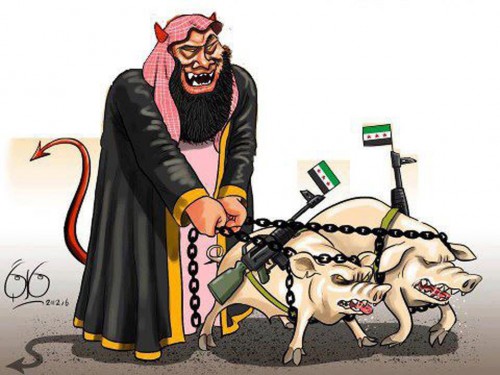

 del.icio.us
del.icio.us
 Digg
Digg
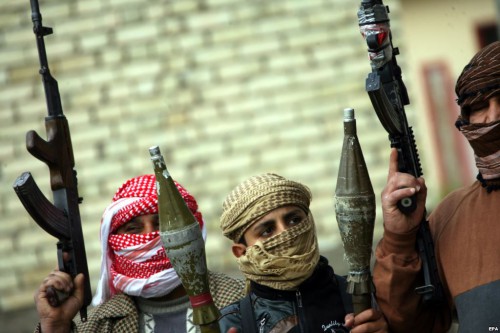
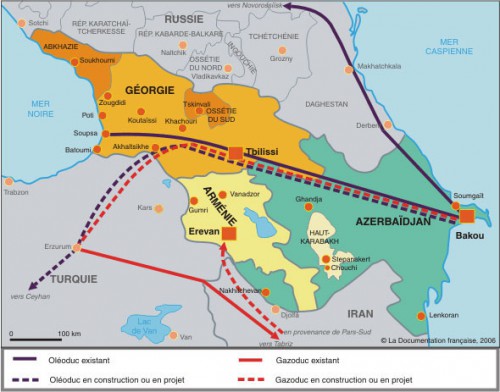
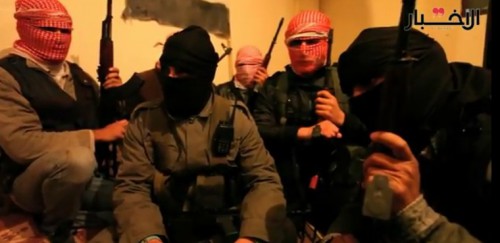

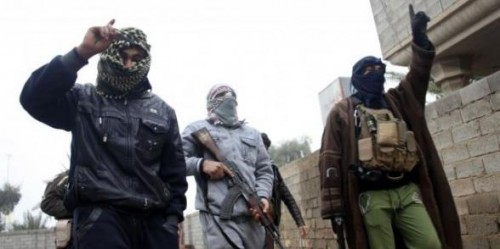

 Volgograd: des inconnus tentent d'incendier une mosquée (police)
Volgograd: des inconnus tentent d'incendier une mosquée (police)
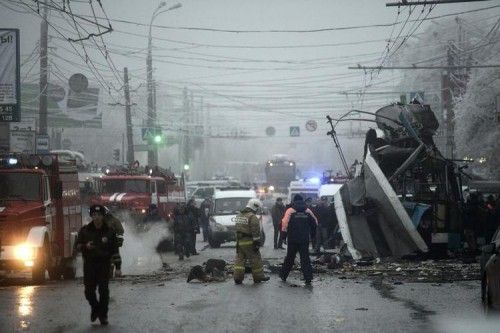



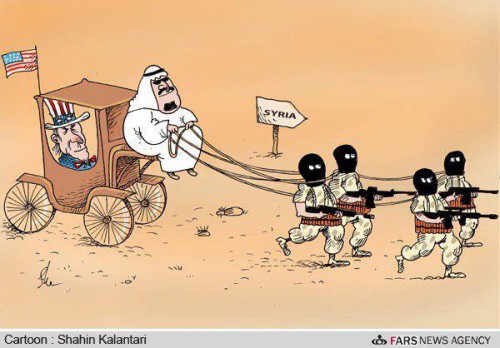
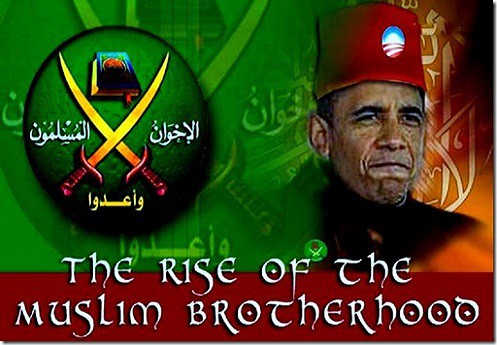
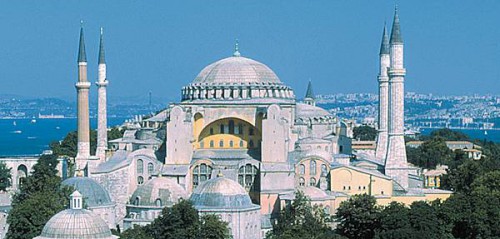
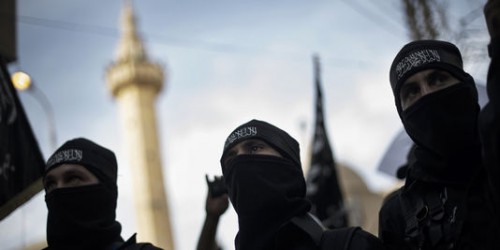
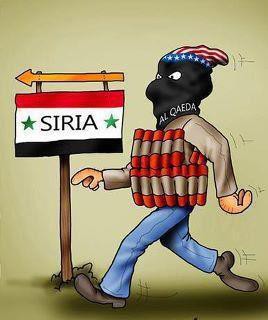 Selon des sources diplomatiques européennes à Beyrouth, le nombre de ressortissants des pays européens se battant en Syrie serait beaucoup plus important qu'annoncé. Il y aurait près d'un millier de Français intégrés dans les rangs des groupes les plus extrémistes de la rébellion, notamment l'Etat islamique en Irak et au Levant (EIIL, proche d'Al-Qaïda), dont les effectifs seraient à 80% composés de non Syriens. Il y a aussi le Front al-Nosra, également proche d'Al-Qaïda et Ahrar al-Cham, représentant la mouvance dite « salafiste-jihadiste ».
Selon des sources diplomatiques européennes à Beyrouth, le nombre de ressortissants des pays européens se battant en Syrie serait beaucoup plus important qu'annoncé. Il y aurait près d'un millier de Français intégrés dans les rangs des groupes les plus extrémistes de la rébellion, notamment l'Etat islamique en Irak et au Levant (EIIL, proche d'Al-Qaïda), dont les effectifs seraient à 80% composés de non Syriens. Il y a aussi le Front al-Nosra, également proche d'Al-Qaïda et Ahrar al-Cham, représentant la mouvance dite « salafiste-jihadiste ».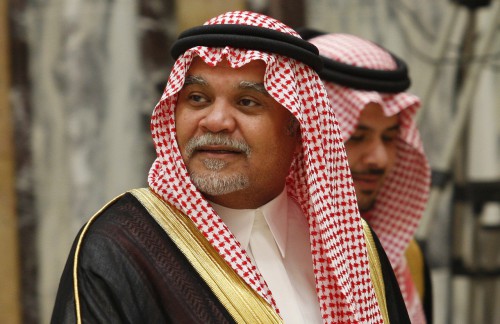
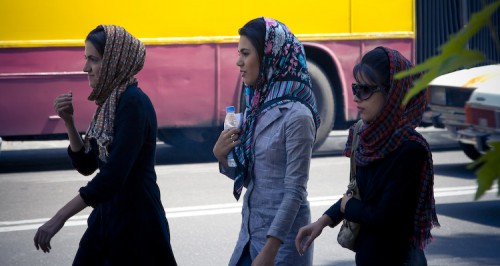
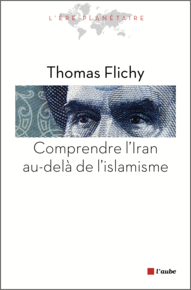 L’Iran est aujourd’hui placé au centre de l’attention géopolitique mondiale pour trois raisons fondamentales. En premier lieu, ce pays constitue le coeur énergétique du monde, exploitant simultanément les réserves en hydrocarbures de la mer Caspienne et celles du golfe Persique. Les puissances du Moyen-Orient qui l’environnent constituent, à cet égard, des périphéries envieuses. Pour la Chine, un partenariat avec l’Iran permettrait l’indispensable sécurisation de ses approvisionnements énergétiques. Ceci explique la double poussée maritime et terrestre de l’Empire du Milieu vers l’Iran, sur les traces des routes de la soie de la dynastie Tang. En second lieu, le monde chiite représente le coeur historique de l’innovation musulmane. Ce foyer d’inventivité est confiné depuis très longtemps par le monde sunnite. Profitant aujourd’hui du basculement irakien et de l’instabilité syrienne, l’Iran pousse son avantage pour étendre son influence au coeur du Moyen-Orient. Mais sa créativité, décuplée par la puissance imaginative de la poésie persane, effraie. En troisième lieu, l’Iran, qui souffre d’un déficit énergétique malgré ses réserves prodigieuses de gaz, développe des activités atomiques de façon accélérée, suscitant les interrogations légitimes de ses voisins. Soucieux d’éviter l’affrontement, les États-Unis et leurs alliés ont exercé des pressions indirectes sur l’Iran afin que celui-ci renonce à l’enrichissement nucléaire. Ces actions ont été qualifiées, le 3 septembre 2001, de djang-e-naram, ou « guerre douce », par Hossein Mazaheri, professeur de droit à Ispahan. Cette nouvelle forme de guerre, intimement liée aux progrès technologiques de la dernière décennie, se présente en effet comme un conflit dans lequel chacun des adversaires, préservant le capital humain et matériel de ses forces armées, cherche à faire tomber l’ennemi par des actions masquées et déstabilisatrices telles que les sanctions financières, la manipulation médiatique, les cyber-attaques ou l’élimination ciblée des têtes de réseau adverses. Ce conflit dépasse de loin la simple réalité iranienne dans la mesure où les puissances asiatiques et continentales que constituent la Russie, la Chine et l’Iran ont connu, malgré des différends internes, un rapprochement spectaculaire au cours des dernières années. Face à cette conjonction, les États-Unis redoutent la formation d’un nouvel Empire mongol, capable de concurrencer leur puissance océanique.
L’Iran est aujourd’hui placé au centre de l’attention géopolitique mondiale pour trois raisons fondamentales. En premier lieu, ce pays constitue le coeur énergétique du monde, exploitant simultanément les réserves en hydrocarbures de la mer Caspienne et celles du golfe Persique. Les puissances du Moyen-Orient qui l’environnent constituent, à cet égard, des périphéries envieuses. Pour la Chine, un partenariat avec l’Iran permettrait l’indispensable sécurisation de ses approvisionnements énergétiques. Ceci explique la double poussée maritime et terrestre de l’Empire du Milieu vers l’Iran, sur les traces des routes de la soie de la dynastie Tang. En second lieu, le monde chiite représente le coeur historique de l’innovation musulmane. Ce foyer d’inventivité est confiné depuis très longtemps par le monde sunnite. Profitant aujourd’hui du basculement irakien et de l’instabilité syrienne, l’Iran pousse son avantage pour étendre son influence au coeur du Moyen-Orient. Mais sa créativité, décuplée par la puissance imaginative de la poésie persane, effraie. En troisième lieu, l’Iran, qui souffre d’un déficit énergétique malgré ses réserves prodigieuses de gaz, développe des activités atomiques de façon accélérée, suscitant les interrogations légitimes de ses voisins. Soucieux d’éviter l’affrontement, les États-Unis et leurs alliés ont exercé des pressions indirectes sur l’Iran afin que celui-ci renonce à l’enrichissement nucléaire. Ces actions ont été qualifiées, le 3 septembre 2001, de djang-e-naram, ou « guerre douce », par Hossein Mazaheri, professeur de droit à Ispahan. Cette nouvelle forme de guerre, intimement liée aux progrès technologiques de la dernière décennie, se présente en effet comme un conflit dans lequel chacun des adversaires, préservant le capital humain et matériel de ses forces armées, cherche à faire tomber l’ennemi par des actions masquées et déstabilisatrices telles que les sanctions financières, la manipulation médiatique, les cyber-attaques ou l’élimination ciblée des têtes de réseau adverses. Ce conflit dépasse de loin la simple réalité iranienne dans la mesure où les puissances asiatiques et continentales que constituent la Russie, la Chine et l’Iran ont connu, malgré des différends internes, un rapprochement spectaculaire au cours des dernières années. Face à cette conjonction, les États-Unis redoutent la formation d’un nouvel Empire mongol, capable de concurrencer leur puissance océanique.


